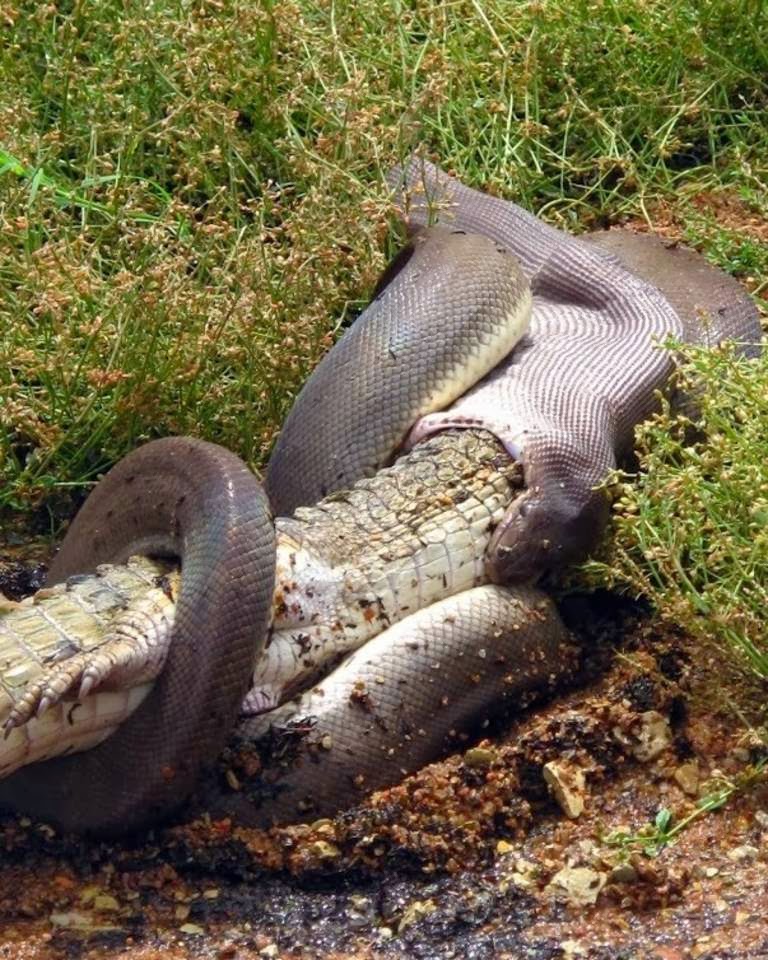In the world of reptiles, few creatures capture the imagination quite like the python and the crocodile. Both are formidable in their own right and play crucial roles in their ecosystems. While they share some similarities, their differences are equally striking. Understanding these differences not only enriches our knowledge of these animals but also highlights the importance of conservation efforts for their habitats. The python, a member of the snake family, is known for its impressive size and constricting abilities, while the crocodile, a powerful aquatic predator, is revered for its strength and adaptability. This article dives deep into the fascinating attributes of both animals, exploring their habitats, behaviors, and unique adaptations.
As we unravel the intriguing comparison of python vs crocodile, it becomes essential to consider their evolutionary backgrounds and ecological roles. Pythons, found in various habitats from rainforests to savannas, are known for their stealth and hunting prowess, often relying on ambush tactics. On the other hand, crocodiles, which inhabit both freshwater and saltwater environments, utilize their powerful jaws and swimming abilities to secure their prey. By examining these two reptiles, we can better appreciate their contributions to biodiversity and the delicate balance of their ecosystems.
In this comprehensive guide, we will answer pivotal questions regarding the python vs crocodile debate, such as their physical characteristics, hunting methods, and habitats. By the end of this article, readers will have a well-rounded understanding of these captivating creatures and their roles in nature.
What Are the Main Physical Differences Between Python and Crocodile?
When comparing python vs crocodile, one of the most obvious differences is their physical appearance. While both are large reptiles, they exhibit distinct characteristics:
- Body Structure: Pythons have elongated, cylindrical bodies covered in scales, which can vary in color and pattern. Crocodiles, however, have a more robust, stocky build with a broad snout and powerful limbs.
- Size: The largest pythons can reach lengths of over 20 feet, whereas crocodiles can grow even larger, with some species exceeding 23 feet.
- Skin Texture: Pythons possess smooth scales, while crocodiles have rough, armored skin with bony plates known as osteoderms.
How Do Their Habitats Differ?
Another significant factor in the python vs crocodile discussion is their habitat preferences. While both reptiles are adaptable, they thrive in different environments:
- Pythons: Typically found in tropical and subtropical regions, pythons prefer forests, grasslands, and swamps. They are often arboreal, found in trees, or in burrows.
- Crocodiles: These reptiles predominantly inhabit freshwater habitats such as rivers, lakes, and wetlands. Some species can also tolerate saltwater, allowing them to inhabit coastal regions.
What Are Their Hunting Strategies?
The hunting techniques of pythons and crocodiles reflect their unique adaptations and environments:
- Pythons: Being constrictors, pythons use stealth to approach their prey, quickly wrapping around it to suffocate it before consumption.
- Crocodiles: As ambush predators, crocodiles rely on their patience and power, often waiting motionless in the water before lunging at unsuspecting prey.
Which One Is More Dangerous to Humans?
When discussing python vs crocodile, the question of danger to humans often arises. While both can pose threats, their interactions with humans vary:
- Pythons: While large pythons can inflict harm, attacks on humans are rare. Most pythons prefer to avoid human encounters.
- Crocodiles: Crocodiles are known to be more aggressive, especially when protecting their territory or young. They are responsible for numerous attacks on humans annually.
What Is Their Reproductive Behavior Like?
In the python vs crocodile debate, their reproductive strategies also differ significantly:
- Pythons: Female pythons lay eggs and often coil around them to protect and incubate them until they hatch.
- Crocodiles: Crocodiles also lay eggs, but they build nests and protect their young more aggressively after hatching.
How Do They Contribute to Their Ecosystems?
Both pythons and crocodiles play vital roles in their ecosystems, contributing to the balance of their respective environments:
- Pythons: By controlling rodent populations, pythons help maintain the ecological balance in their habitats.
- Crocodiles: As apex predators, crocodiles regulate fish and other animal populations, influencing the health of aquatic ecosystems.
Are There Conservation Efforts for Both Species?
With the increasing threat of habitat loss and poaching, conservation efforts are essential for both pythons and crocodiles:
- Python Conservation: Various organizations work to protect python habitats and educate communities about their ecological importance.
- Crocodile Conservation: Efforts include habitat restoration, legal protection, and breeding programs for endangered species.
Conclusion: Python vs Crocodile – A Fascinating Comparison
In summary, the python vs crocodile comparison highlights the unique adaptations, hunting strategies, and ecological roles of these two incredible reptiles. Both species face threats from human activity, making conservation efforts vital for their survival. By understanding and appreciating the differences and similarities between pythons and crocodiles, we can foster a greater appreciation for the natural world and the importance of preserving it.


